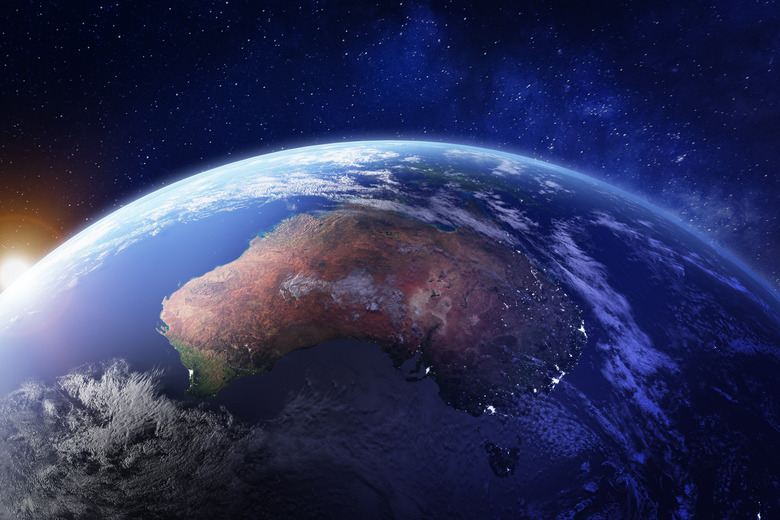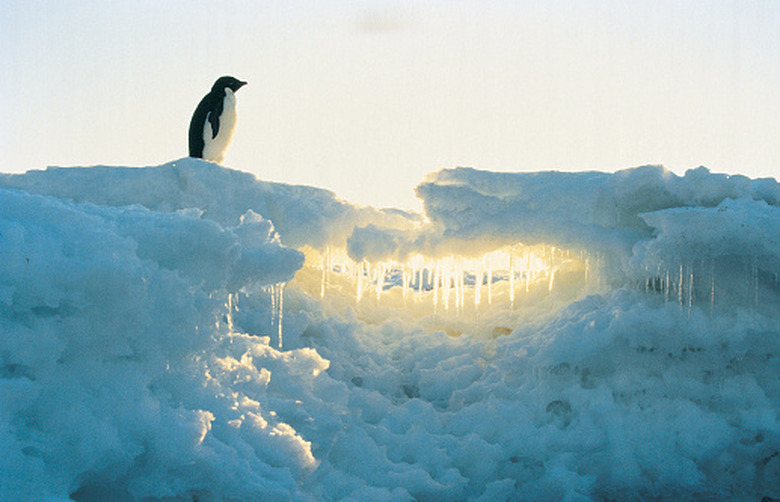Which Two Continents Are Located Entirely In The Southern Hemisphere?
While large parts of South America, Africa and Asia are located in the Southern Hemisphere, the only two continents whose entire territory is south of the Equator are Australia and Antarctica. Each of these continents has large areas that are inhospitable to human life, but beyond that they have little in common.
Australia's Geography
Australia's Geography
The continent of Australia is sometimes called the Land Down Under because it's so far south. The entire continent is one country, split into eight territories and states. It is the world's smallest continent but the sixth-largest country. Australia is almost 3,200 km. (1,988 mi.) from its northern coast to its southern coast and nearly 4,000 km. (2,485 mi.) from east to west, for a total of 7,686,850 sq. km (2,967,909 sq. mi). Australia spans three time zones and includes mountains, flat lands, deserts and tropical jungles. The seasons are reversed from those in the Northern Hemisphere, so Australia's winter months are June through August and its summer months are December through February.
Australia Info
Australia Info
Most Australians live along the country's coasts, particularly between Cairns and Adelaide. Sydney and Melbourne are the country's largest cities, and they are both major, international metropolitan areas with cultural and historical landmarks that make them popular tourist destinations. The interior of the country is flat, barren and largely unpopulated — often called the Outback — yet it supports a variety of animal and plant species that have adapted to the harsh environment. More than 80% of Australia's mammals, landlocked fish and flowering plants are not found anywhere else on Earth.
Antarctica's Geography
Antarctica's Geography
Slightly larger than Australia and half as big as the United States, Antarctica is the continent at the bottom of the world. Beneath the thick sheet of ice that covers 98% of the continent, Antarctica is mountainous and rocky. The Transantarctic Mountains divide the continent into two areas: East Antarctica, which is about 488 meters (533 yds.) above sea level, and West Antarctica, which varies in altitude. Lake Vostok, the continent's largest lake, and one of the largest in the world, is covered by a 4-kilometer-thick (nearly 2.5 mi.) ice sheet.
Antarctica Information
Antarctica Information
Despite having the world's coldest temperatures, Antarctica supports a variety of wildlife. Whales, seals, penguins have all adapted to the continent's harsh conditions by developing thick coats or skins, layers of blubber and small extremities. Additionally, empire penguins have developed huddling behaviors to retain body heat. Seven countries have territorial claims to portions of Antarctica. However, under the Antarctic Treaty, they have agreed to ignore territorial borders and collaborate to study and protect the continent.
Cite This Article
MLA
Mitchell, Stephanie. "Which Two Continents Are Located Entirely In The Southern Hemisphere?" sciencing.com, https://www.sciencing.com/two-located-entirely-southern-hemisphere-8598469/. 22 November 2019.
APA
Mitchell, Stephanie. (2019, November 22). Which Two Continents Are Located Entirely In The Southern Hemisphere?. sciencing.com. Retrieved from https://www.sciencing.com/two-located-entirely-southern-hemisphere-8598469/
Chicago
Mitchell, Stephanie. Which Two Continents Are Located Entirely In The Southern Hemisphere? last modified March 24, 2022. https://www.sciencing.com/two-located-entirely-southern-hemisphere-8598469/


